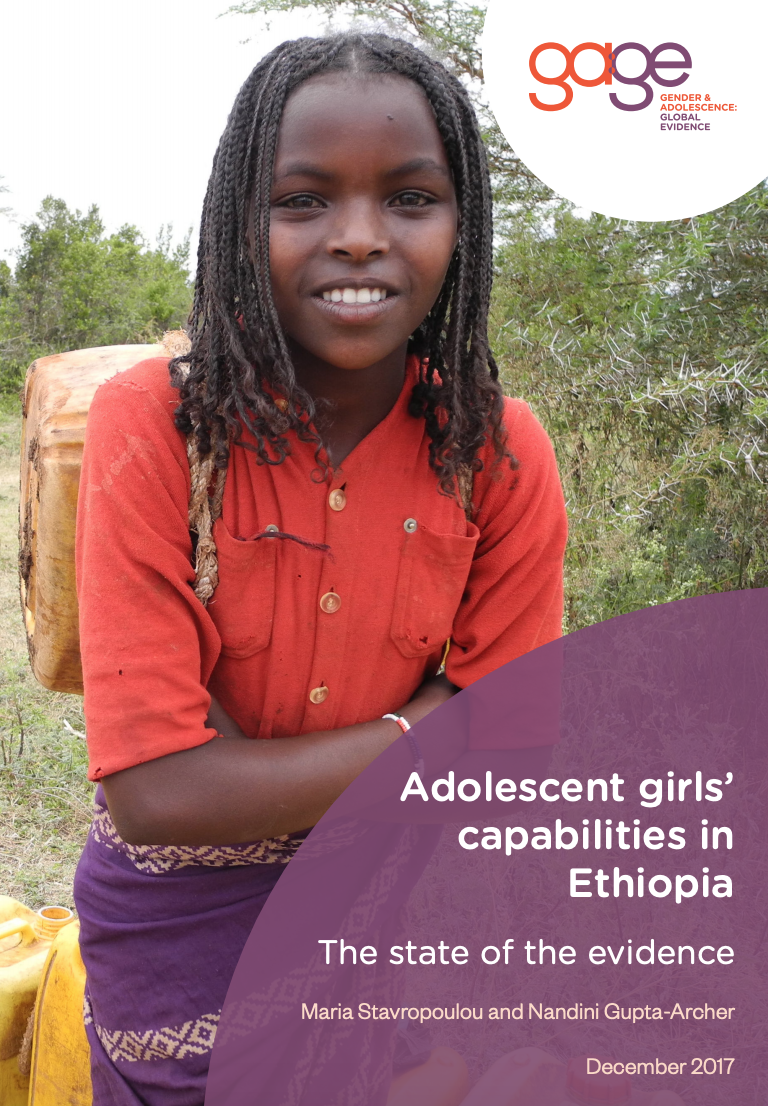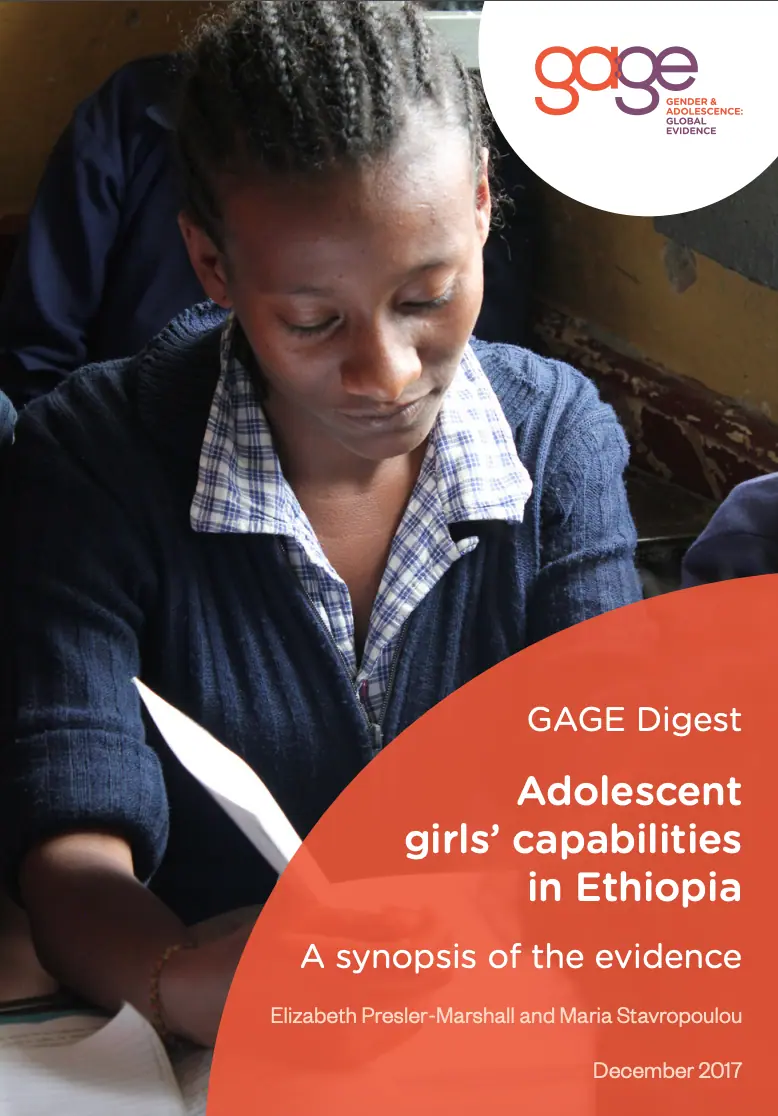
Adolescent girls' capabilities in Ethiopia: the state of the evidence on programme effectiveness
publication
Adolescent girls' capabilities in Ethiopia: the state of the evidence on programme effectiveness
19.12.2017 | Ethiopia
Country
Ethiopia
Capability domains
Bodily integrity and freedom from violence
Audience type
Policy maker or donor, Programme designer or implementer, Researcher
Year of publication
2017
Study methodology
Qualitative
Authors
Maria Stavropoulou, Nandini Gupta-Archer and Rachel Marcus
This rapid country evidence review brings together key evidence on the effectiveness of interventions seeking to support the capability development of Ethiopian adolescent girls (aged 10-19). Produced to feed into the design of GAGE’s longitudinal impact evaluation and as a resource for researchers, programme designers and policy makers, this mapping draws on nearly 200 documents — over 60 of which are impact studies and evaluations. As a living document to be updated as necessary, it lays out current evidence on “what works” to support girls’ education and learning; bodily autonomy, integrity and freedom from violence; sexual and reproductive health, health and nutrition; psychosocial wellbeing; voice and agency; and economic empowerment.
Our mapping found that of the examined impact studies and evaluations, only a third could be considered rigorous and a disproportionate number evaluated interventions aimed at child marriage in Amhara Regional State. Most critically, nearly all had short time frames — and were conducted soon after projects ended — and few delineated between different age groups to ascertain whether some types interventions work best for younger or older girls.
Overall, it appears that multi-component programmes that simultaneously work with adolescent girls, boys, girls’ families, and broader communities and systems are most likely to effect change. Mentor-led safe-spaces for girls, community conversations, and the involvement of boys and men appear to be particularly promising.
Suggested citation
Stavropoulou, M. and Gupta-Archer, N. (2017) Adolescent girls’ capabilities in Ethiopia: the state of the evidence on programme effectiveness. London: Gender and Adolescence: Global Evidence. (https://www.gage.odi.org/publication/adolescent-girls-capabilities-ethiopia-state-evidence-programme-effectiveness/)


